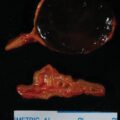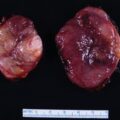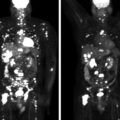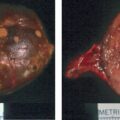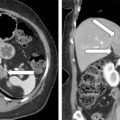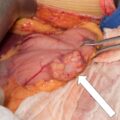The most common type of congenital adrenal hyperplasia (CAH) is 21-hydroxylase deficiency, which occurs in 1 in 10,000 live births. The goals of therapy in CAH include (1) replacement therapy for glucocorticoid and mineralocorticoid deficiency and (2) controlling androgen excess. Women with 21-hydroxylase deficiency may present with impaired fertility; however, normal pregnancy rates can be achieved with optimal glucocorticoid replacement therapy. , Here we discuss the approach to glucocorticoid replacement therapy before and during pregnancy.
Case Report
The patient was a 27-year-old woman with history of 21-hydroxylase deficiency who presented for advice on management during future pregnancy. Her husband had genetic testing for 21-hydroxylase deficiency and was not a carrier.
PREVIOUS HISTORY
The patient was diagnosed with 21-hydroxylase deficiency at birth when she developed symptoms consistent with an adrenal crisis, and physical examination revealed ambiguous genitalia. Glucocorticoid and mineralocorticoid replacement therapy was initiated in the hospital. Over the years, her glucocorticoid therapy varied, initially consisting of hydrocortisone and later prednisone for 9 years, and, more recently, dexamethasone. At age 2 and 7 years, she was treated with clitoral repair operations. Menarche occurred at age 12 years, and menstrual cycles have been irregular.
She achieved her first pregnancy spontaneously at age 26. Before this, she and her husband had unprotected intercourse for 4 years without success.
CURRENT EVALUATION
The patient’s medications included 0.75 mg dexamethasone daily and 150 mcg fludrocortisone daily, with an excellent compliance. On physical examination, her body mass index was 34.22 kg/m 2 , blood pressure 103/72 mmHg, and heart rate 76 beats per minute. She had no hirsutism and no acne. Pale striae were noted under the axillary area and over the lower abdomen. The serum androstenedione concentration was low-normal at 53 ng/dL (normal range, 30–200), and the serum concentration of 17-hydroxyprogesterone was undetectable. She was advised that her dexamethasone dose was excessive and it was gradually decreased to 0.25 mg daily, at which point her serum androstenedione concentrations were mid-normal. She was also advised that as dexamethasone crosses the placenta, hydrocortisone would be a better choice for glucocorticoid replacement therapy when pregnancy is planned.
FOLLOW-UP
Dexamethasone was replaced by hydrocortisone, and she was able to conceive her second child at age 29 years (after one cycle of clomiphene therapy). She conceived her third child at age 35 years without any reproductive assistance therapy. During both pregnancies, she had significant morning nausea and vomiting. Because of an inability to take glucocorticoid therapy in the morning, she switched to prednisone at bedtime (5–7.5 mg at night). Her prednisone was titrated to mid-normal androstenedione concentrations. At the time of planned cesarean section, she received hydrocortisone 100 mg before surgery and then 50 mg every 6 hours during the first 24 hours. She was able to switch to oral glucocorticoids the second day after delivery.
After pregnancy, she was able to change her glucocorticoid regimen to hydrocortisone three times a day.
Discussion
Women with 21-hydroxylase deficiency may present with impaired fertility as a result of androgen excess, progesterone excess, and oligoanovulation. , Normal pregnancy rates can be achieved with adequate suppression of follicular phase progesterone through optimization of glucocorticoid therapy. Hydrocortisone is the glucocorticoid of choice throughout the pregnancy, as it does not traverse the placenta. Management of glucocorticoid and mineralocorticoid therapy during pregnancy should be reevaluated during the second and third trimesters. Assessment of symptoms, physical examination, and biochemical workup (electrolytes, androstenedione) aid decision making on individualization of therapy. As in adrenal insufficiency of any cause (see Case 98), all patients with 21-hydroxylase deficiency should have a clear and adequate plan for stress doses of glucocorticoids to be administered during labor and delivery.

